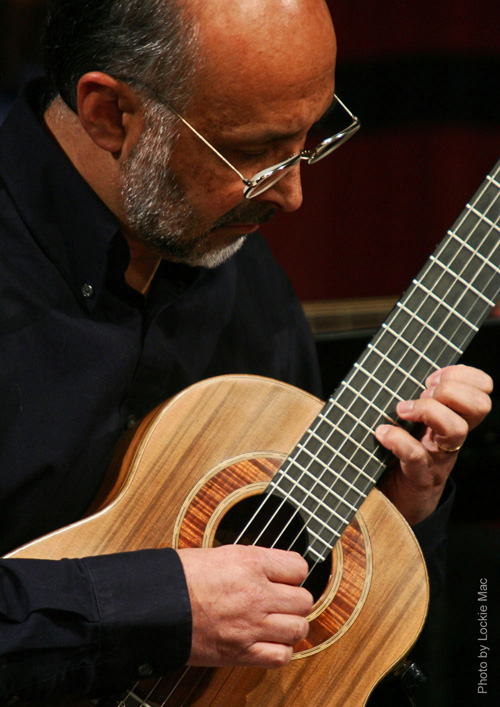
The Guitar In Ensemble
By Richard Charlton
During the past few years there has been a favourable increase in the number of ensemble activities for guitarists, students and professionals. The guitar ensemble whether it be a duo, quartet or larger body is now an established fact and can provide the player with an opportunity to improve themselves not only as a guitarist but more importantly as a musician.
Share this:
[feather_share]
In an ensemble even relatively inexperienced players can learn to read more quickly, phrase correctly, gain control of dynamics and improve their rhythm by having to follow a beat. More over, players can gain confidence in performance, as the prospect of having to play in a group is nowhere near as daunting as having to follow a solo performance! With these aims in mind a group of teachers and players in Sydney have for the past eight years conducted the annual Sydney Guitar Summer School.
A feature of all the courses offered, whether it be at a beginners level or at an advanced level, has always been the “large ensemble.” Each year I have tutored, conducted or played in many of these groups and can highly recommend any such activity to teachers and students alike. I myself am a member of the Sydney Guitar Quartet and conduct my own guitar ensemble at the school at which I teach. In recent years I have come in contact with the Perth Guitar Ensemble (a body of about 20 players), there is also a group “The Guitar Family,” a quartet at the Canberra School of Music, and I have also heard of a quartet in Adelaide. Although these groups are more or less professional I see no reason why there should not be more amateur ensembles set up by students and teachers.
Having expounded the values of ensemble playing I must also say that the guitar is one of, if not the most difficult instruments to combine with others. Owing to the immediacy of the plucked string sound the precision required to get a single chord to sound together is far greater than that of, say a string orchestra. In the words of one conductor who was trying to get a particular section of the ensemble to come in on time, “you will always be early!” Be that as it may, the advantages, in my opinion, outweigh the difficulties – half the fun is getting there anywhere!
The simplest form of ensemble is of course the duo and there is plenty of music published for this, but if you get four people together, the number of things published for guitar quartet is quite surprising – everything from Bach to Joplin. Broekmans and Van Poppel publish a book called Five Pieces from Danserye by Susato which is an excellent introduction to quartet playing for students and one that I have used many times. There is also student material published by Novello, a many others. When there are six or more, you can try trios, doubling the parts etc. and so on.
If you are lucky enough to get a larger body of players interested, say 15 to 20, then you can really get down to business. You can use quartets or trios and double the lower part with bass guitar. I use an electric bass in my own ensemble but acoustic works very well. If you cannot find a bass player the ensemble can function quite well without one but it does add a great deal to the fullness of the sound.
Most of the larger groups I’ve seen use a bass instrument of some sort. The Sydney Mandolins use mandolins, mandolas, guitars and an electric bass. The Perth Guitar Ensemble use an acoustic bass guitar and if I remember correctly the University of the Philippines Ensemble use an 8 string guitar in their group.
You can also extend the top range by using one or two requintos or, as I have done in the past, attach capos to say the fifth fret of a section of the ensemble i.e. give them a transposing part written a 5th lower. This is only necessary where the players are more elementary and cannot play or read with confidence in higher positions.
I merely write to interest those players or teachers who might not have thought of such things as I am sure there are many guitarists, to whom all of this is nothing new! My knowledge of guitar ensembles has been gained mainly by trial, error and experimentation but I know the possibilities are endless. The tone colour produced by some 20 guitars playing pizz and pianissimo and forte. Between these two extremes is a whole new world of sound.
Richard Charlton is a member of the The Sydney Guitar Quartet and the Bennelong Players. Since 1984 he has been co-ordinator of instrumental music Ascham School in Sydney.
All the members are involved in ensemble music either in teaching or performing.
